These drawings originate from a series of digital prints that explore the formal and compositional elements of cinematography, as well as the visual characteristics of electronic data transfer related to photography, video, and film.
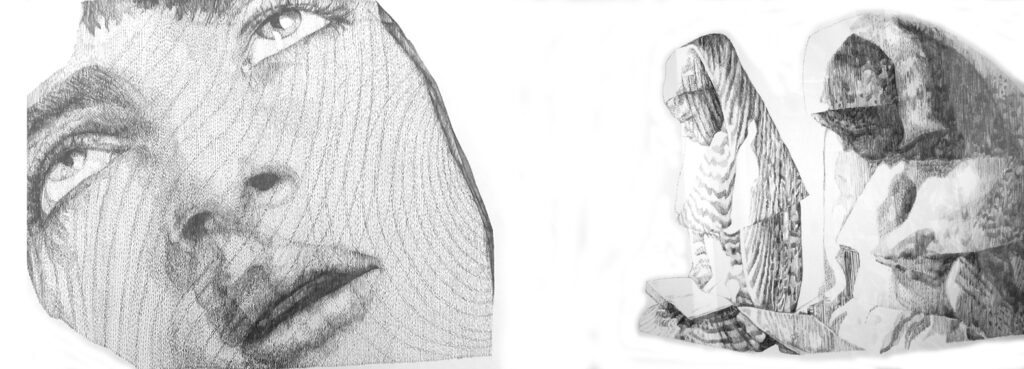
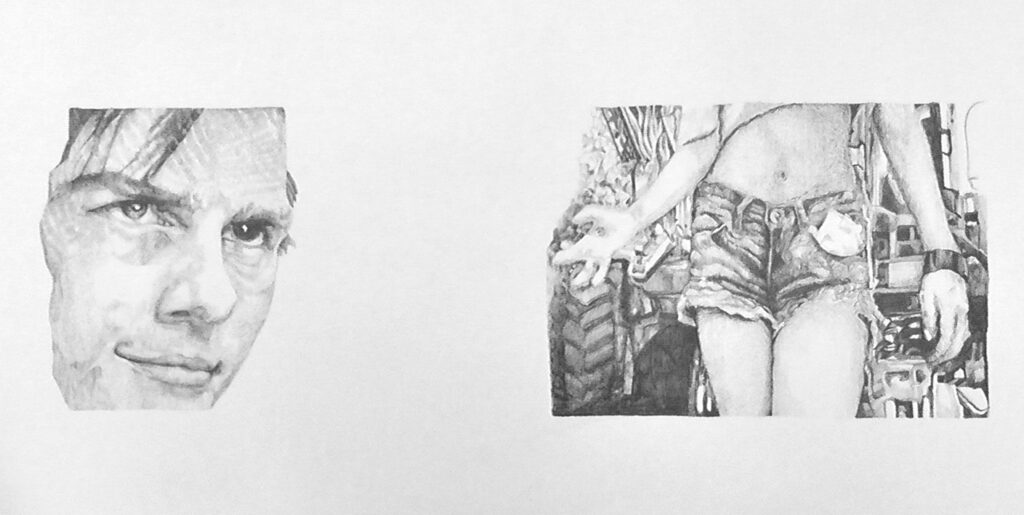
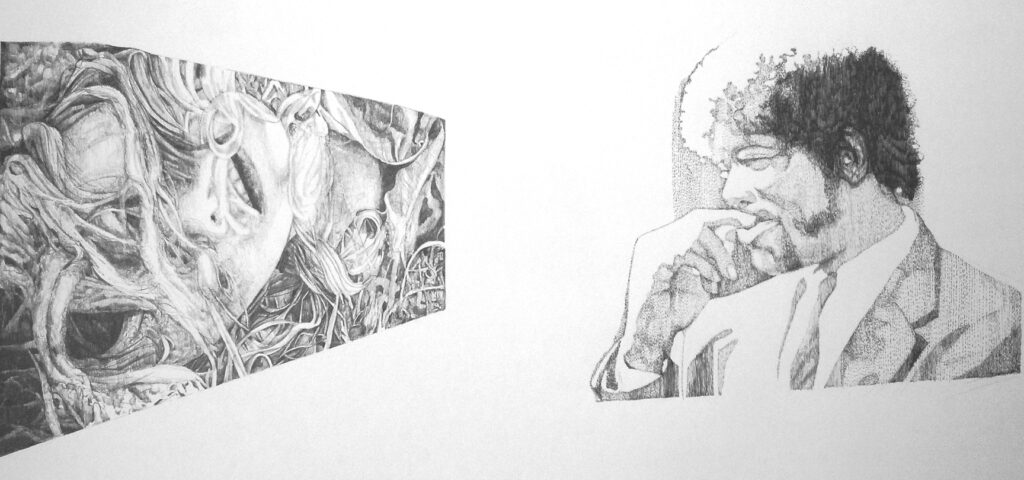
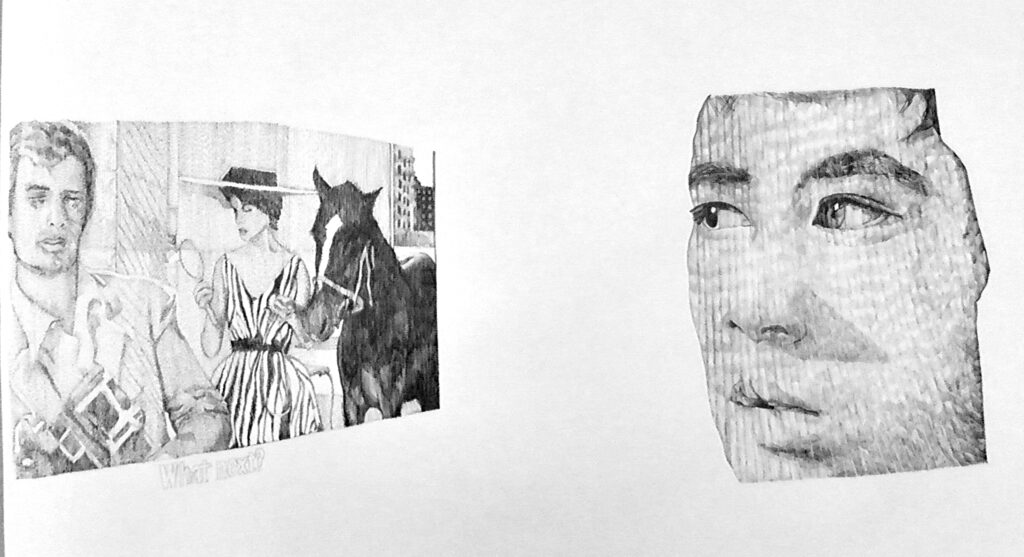
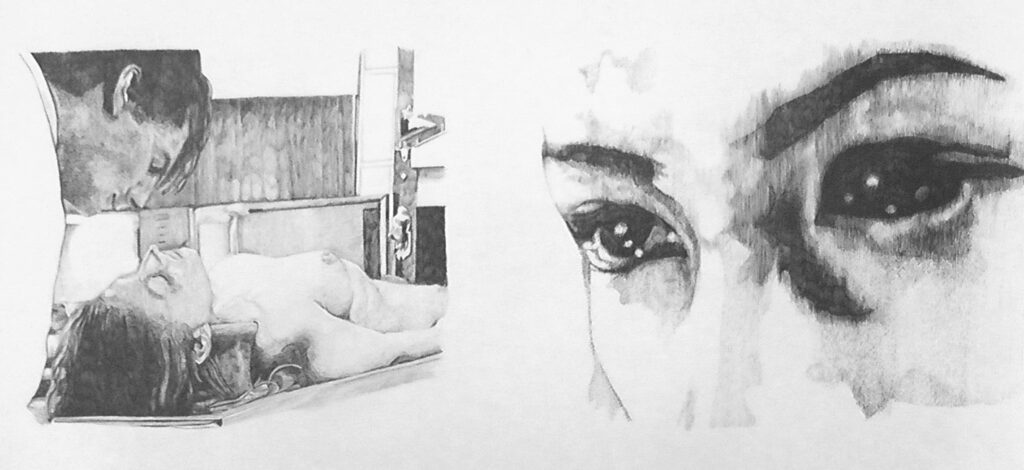
Each drawing consists of two extracted film stills, removed from their original narrative contexts and placed within a format reminiscent of an elongated cinema screen. By combining stills from different scenes into a single frame, new temporal and spatial relationships are created, allowing the images to enter into dialogue with one another. In some cases, subtitled text appears—captured at the moment of screen capture—introducing an additional interpretive layer. The stills are composed at angular orientations, generating the illusion of looking into a scene, as if from within a darkened cinema theatre.
The works foreground the aesthetic qualities shaped by the technical conditions of electronic data transfer—such as moiré patterns, aliasing, and non-synchronisation. There is a deliberate attempt to mimic digital effects through analogue means: pencil on cartridge paper is used to echo the marks of an inkjet printer. The hand follows the eye, scanning the large-format digital prints and translating their data into lead marks. These marks are built up through pressure, touch, breath, and inherited tremor—registering moiré effects, interlacing, and screen lines from analogue TV imagery.
This analogue process becomes a form of data mapping, navigating the intersection of consciousness, technology, and surface. The drawing action is documented on video and accelerated in post-production, accompanied by ambient studio sounds. The resulting film allows viewers to witness the transformation of time—watching hours of labour condensed into seconds—as the hand mimics the machine and the rhythms of the body are laid bare.
